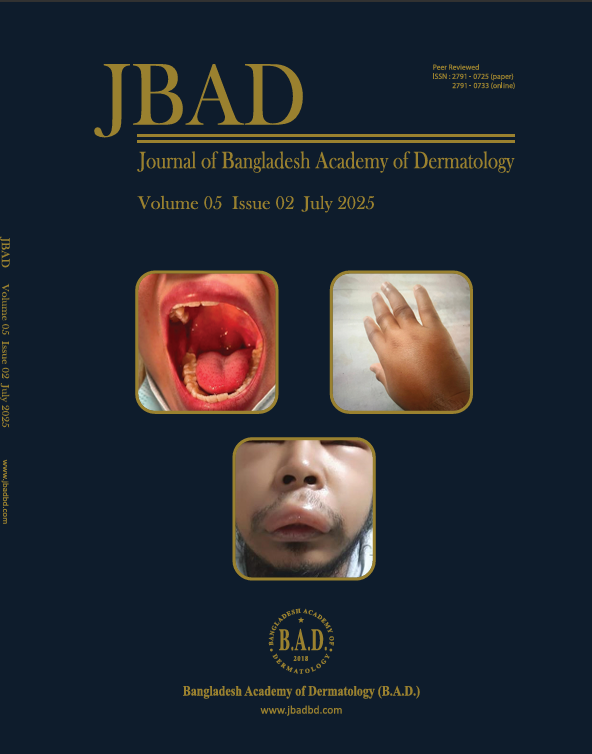Association of serum IL-23 and IL-17A level with lichen planus: A case-control study
Abstract Background: Cellular involvement in the pathogenesis of lichen planus is well established. Initially it is mediated by T-helper 1 (Th1) response and in the later part it turns into a T-helper 2 (Th2) response. In the etiopathogenesis of lichen planus IL-17A and IL-23 may exert a crucial effect and discovering their role may help to emerge new therapeutic options to ameliorate disease symptoms and also complications like metabolic syndrome and malignancy. Objectives: To assess serum level of IL-17A and IL-23 in patients with lichen planus and healthy individuals by ELISA and to observe their association with disease severity. Methods: Patient of lichen planus was included as case and age and sex matched healthy individual as control were selected. 3 ml of blood sample was collected from both case & control for ELISA. Disease severity was assessed using LPSI (Lichen Planus Severity Index). Result: Serum levels of IL-23 and IL-17A were higher in cases (IL-23=414.0±510.7; IL-17A=139.4±192.1) than the controls (IL-23=22.9±33.5; IL-17A=2.90±2.06) and p value was <0.001, which was significant. These cytokines decline over time with a statistical significance. Male has a higher level (195.71±236.53) of serum IL-17A than female (72.84±86.38) with a p value=0.026). Conclusions: Serum levels of IL-23 and IL-17A were significantly elevated in patients with lichen planus and level of these cytokines decrease with increasing disease duration. IL-17A level in serum was higher in male than female indicating a possible sex specific way of IL-17A secretion. No relation of IL-17A and IL-23 with disease severity was observed. Keywords: Lichen Planus, Association, IL-23, IL-17A |

